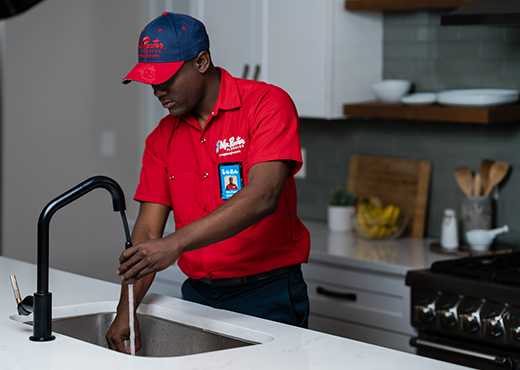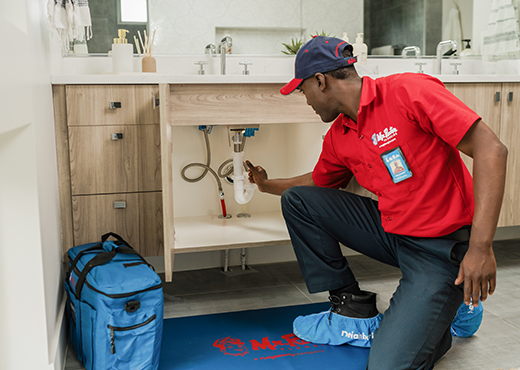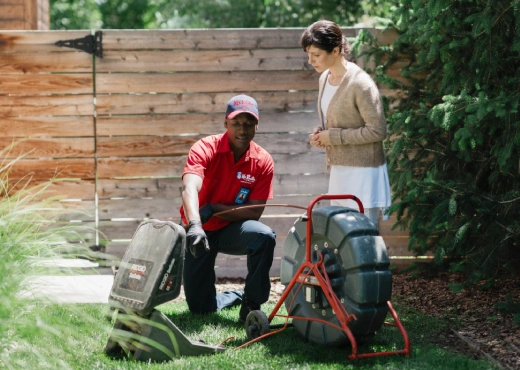Mr. Rooter Plumbing of Denver offers residential toilet repairs and installations in homes across Denver, Aurora, and Castle Rock, CO. If you're looking to have a new toilet installed, our team is here to support you. We'll assess your home and take all the necessary steps to ensure your toilet is properly installed. We understand that when your plumbing isn't working as it should, it can disrupt your daily life. Our goal is to provide you with fast and reliable assistance. If you decide to use our services, we guarantee a positive experience that will make you trust us for regular plumbing check-ups. If you're interested in having us install a new toilet, don't hesitate to contact us.

Why Should You Choose Us for Service?
If you're facing plumbing problems and need immediate assistance, you can rely on us for all your repair and replacement needs. We prioritize our customers' needs in every service we provide. No matter how complicated your situation is, we're here to help you without delay. Here are some reasons why you should choose us for our services:
- We have the necessary licenses and insurance.
- We guarantee the quality of our work and the parts we use.
- We don't charge extra for overtime.
- Our pricing is transparent and clear from the beginning.
- We provide excellent customer service.
- Our professionals are polite and well-dressed.
- We offer convenient appointment times.
- We provide flexible service options.
Request an Estimate Today for Service
Mr. Rooter Plumbing of Denver is fully prepared to assist you with the installation or repair of your toilet systems whenever you find yourself in need. Whether you're currently facing a toilet issue or simply want to ensure it's in optimal condition, we can arrange a convenient appointment that suits your schedule. Our team is committed to promptly resolving any plumbing problems that may arise. You can trust that you won't have to wait long for a highly skilled professional to arrive, and you can comfortably remain at home while they expertly handle the work. We are steadfast in providing swift and reliable service. We encourage you to reach out to us today to schedule your service appointment, allowing us to address your toilet needs promptly and effectively.
Residential & Commercial Services
-

Drain Cleaning
Let Mr. Rooter get rid of your kitchen, bathroom, and sewer clogs.Learn More Drain Cleaning -

Plumbing Repairs
Schedule a repair before a small leak becomes a big headache.Learn More Plumbing Repairs -

Sewer Line Repair
Avoid a costly sewer replacement with a sewer line repair.Learn More Sewer Line Repair -

Emergency Plumbing
Emergencies happen, and Mr. Rooter helps solve them quickly.Learn More Emergency Plumbing
Mr. Rooter Plumbing of Denver
Choose the plumbing services team in your area. When it comes to selecting the right team for your commercial or residential plumbing services, Mr. Rooter Plumbing is the right choice.
- Arvada
- Aurora
- Bailey
- Bennett
- Black Hawk
- Brighton
- Broomfield
- Buffalo Creek
- Castle Rock
- Centennial
- Central City
- Commerce City
- Conifer
- Denver
- Dupont
- Eastlake
- Elizabeth
- Empire
- Englewood
- Evergreen
- Franktown
- Georgetown
- Golden
- Henderson
- Idaho Springs
- Idledale
- Indian Hills
- Kiowa
- Kittredge
- Lakewood
- Littleton
- Lone Tree
- Louviers
- Morrison
- Parker
- Pine
- Rollinsville
- Sedalia
- Silver Plume
- Strasburg
- Thornton
- Watkins
- Westminster
- Wheat Ridge
Services We Provide
Let Us Call You

Join Our Team
Plumbing isn’t just about leaks, pipes, and gaskets - it’s about people. Mr. Rooter Plumbing franchisees offer you a career path for growth, and will treat you with the same respect and integrity that they treat their own friends and family, because at the end of the day, you can’t serve customers well without a happy, motivated, and committed team. Creating a culture with an exemplary work ethic is just as important as plumbing, and it’s part of everything Mr. Rooter Plumbing does.
